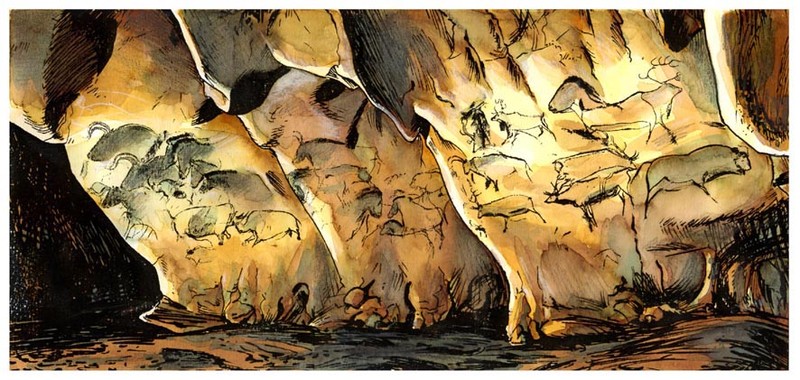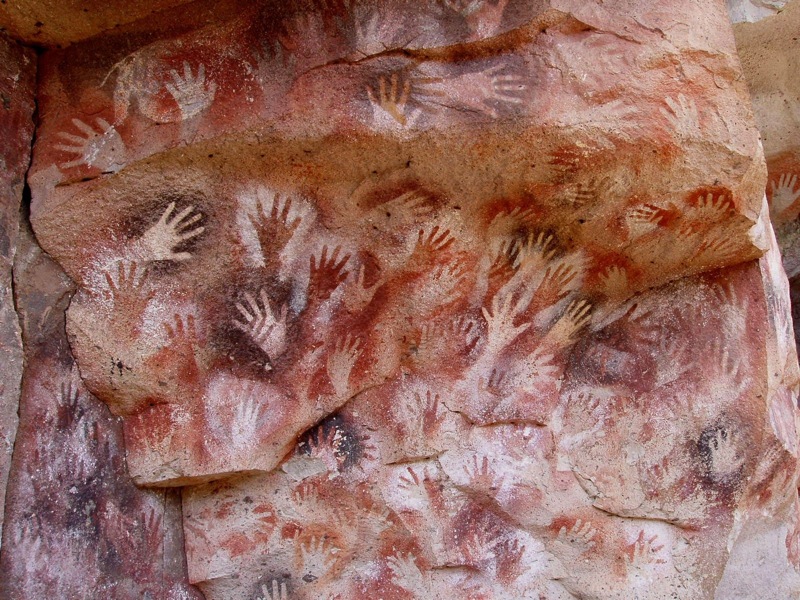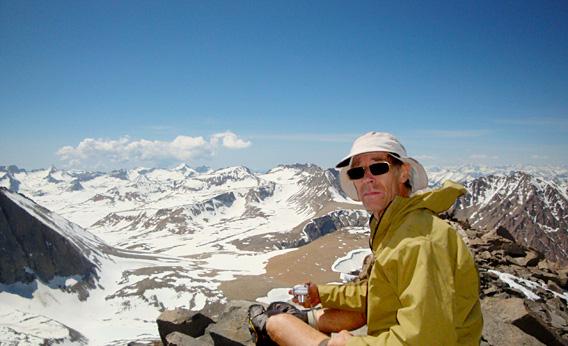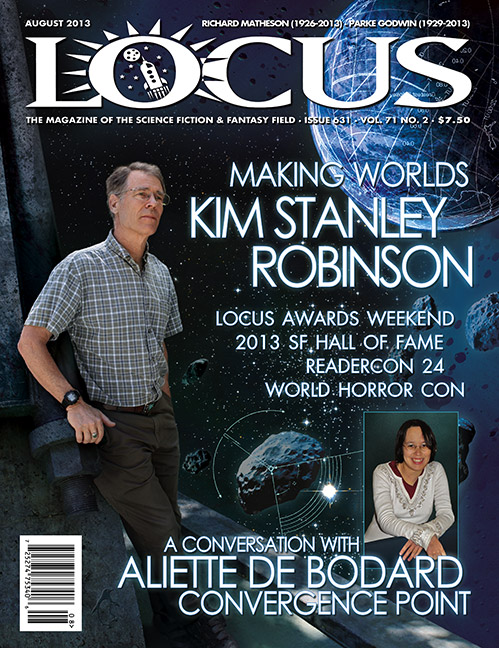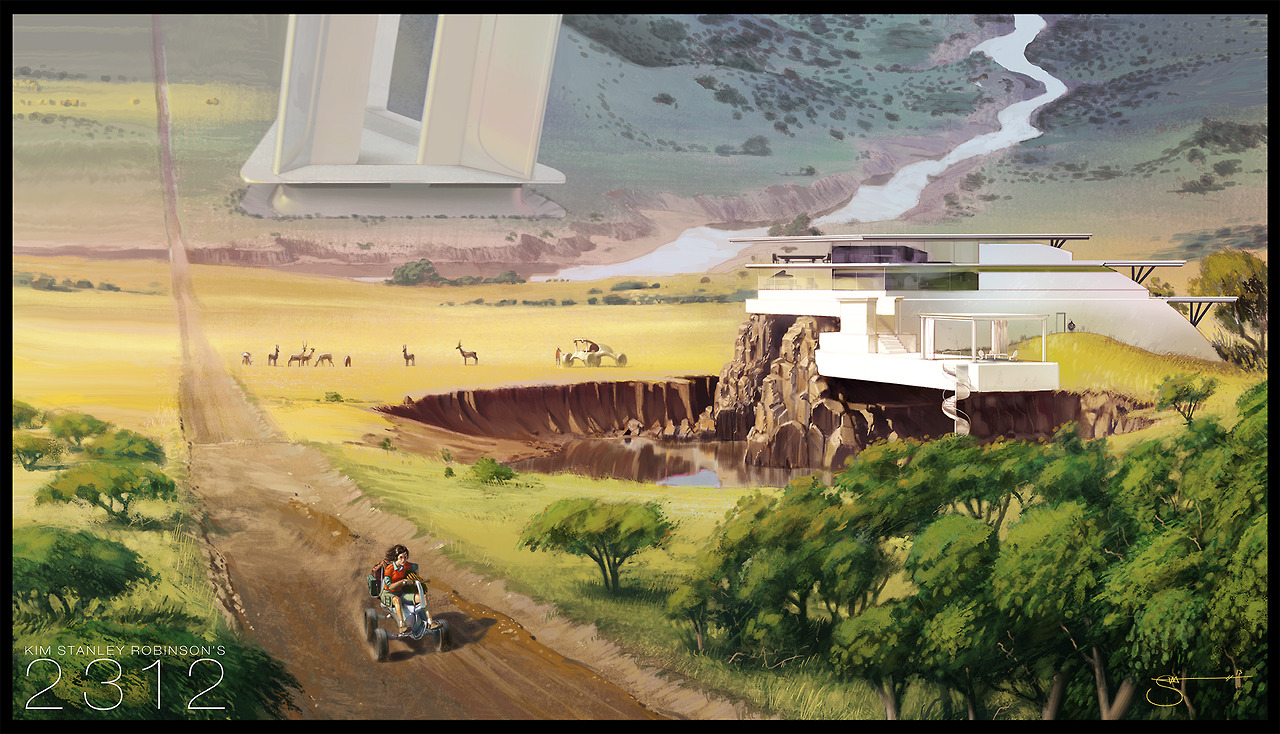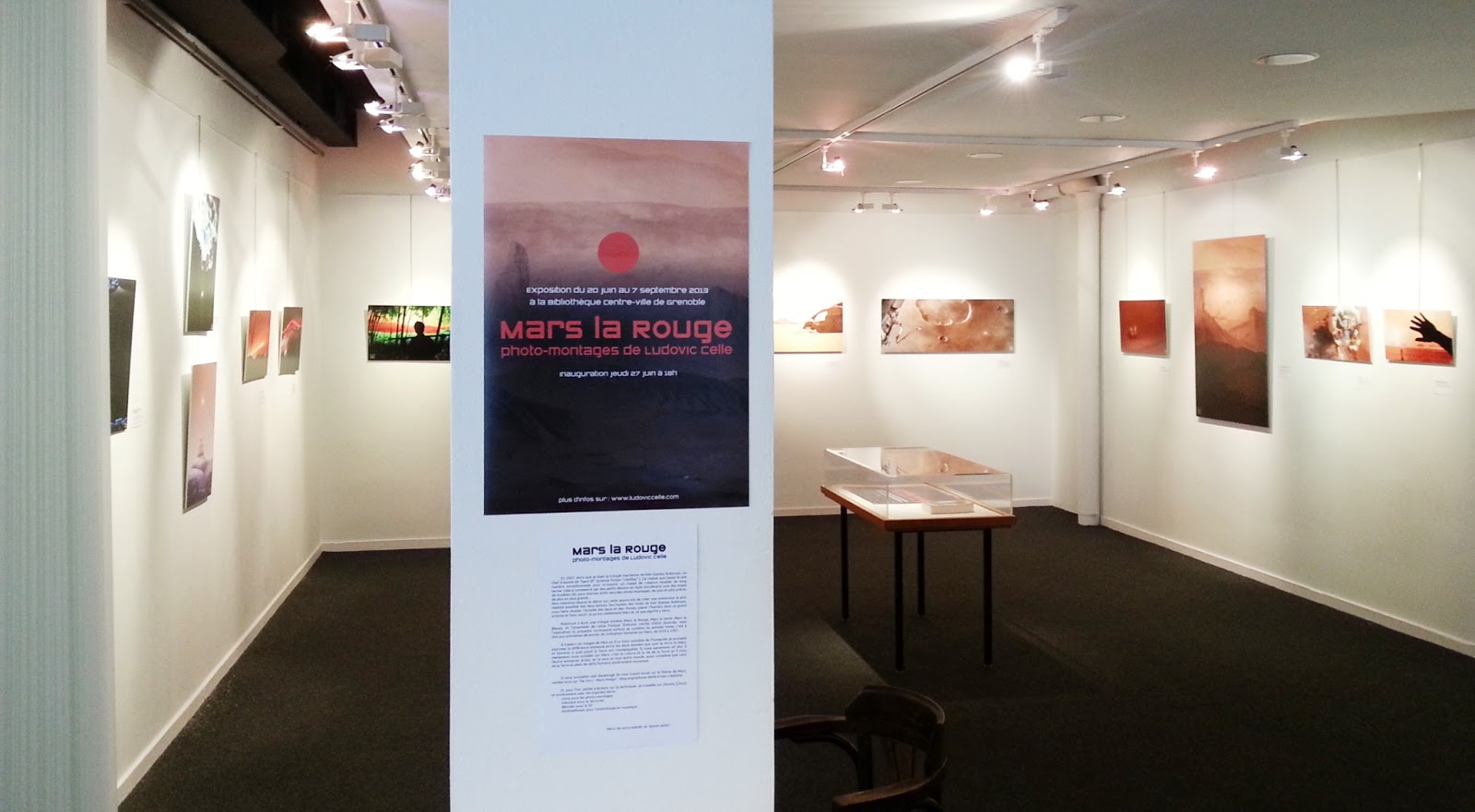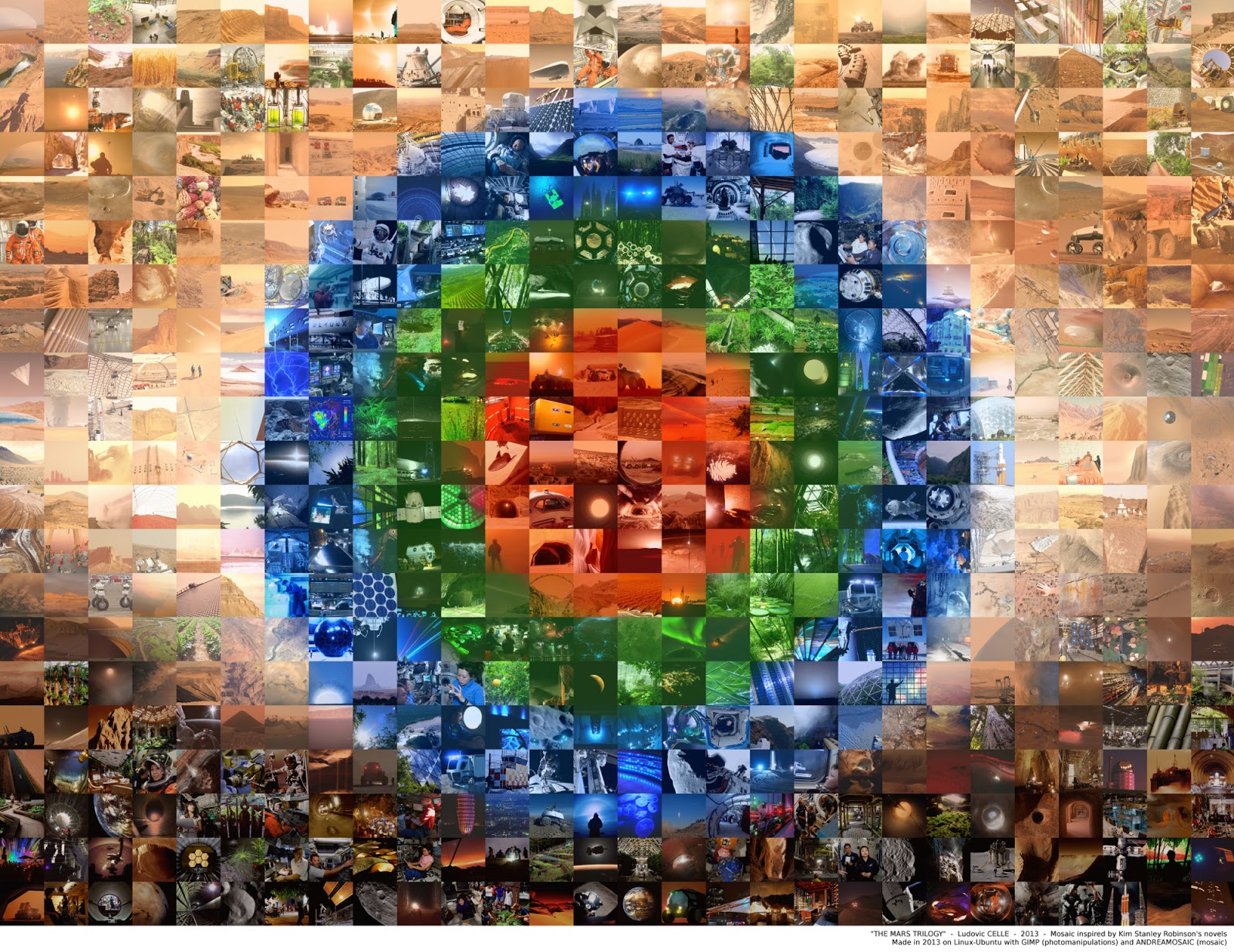Shaman interviews & reviews II
Submitted by KimonSHAMAN has been out for a few months now, in hardcover. Shaman is also out as an audiobook: Hachette, Ambling Books, ... It is read by Graeme Malcolm.
Stan was interviewed for Focus, an Illinois radio. Listen to him talk about his Mars trilogy and Shaman, and reminisce extensively about authors that inspire him, Ursula Le Guin and Gene Wolfe.
Stan participated in an online Q&A chat at Firedoglake Book Salon -- a nice way to interact with the author directly. The questions and answers are many and the whole chat long to go through, but extremely informative; Stan's answers only can be read here. Some interesting bits below:
On science fiction writing and worldbuilding:
They are similar processes, in that they are both settings and societies that don’t exist now, and so there has to be enough information in the text for the reader to be able to envision them. So this is a particular method of novel writing that includes description as well as dramatized action, and it has to be fitted into the story gracefully, if possible.
The paleolithic culture is one that really existed but which we have to infer from very few remnants. A future society has not yet existed, but presumably will still have elements of now that we know well. So the absences that have to be filled in are different in nature, but both require an effort of imagination on the part of both writer and reader.
I’ve been interested in the paleolithic humans for a long time. It’s part of my science fiction project; if you try to imagine what humanity could become, you have to think about what we are now, and how we became what we are–and that gets you back to the paleolithic, where we evolved to what we are.
So I’m interested in sociobiology as a kind of sf science, speculative about our deep primate nature and its effects on us now.
The fact that these people had the same genome we do is so very suggestive; it means culture is very important, and also that we might choose deliberately to live in ways that give us the best of the paleolithic experience.
I think the last line of Loon’s wander is one of the great last lines I have come up with, because we suddenly have to recalibrate Loon’s age, and it should be a big surprise. But they had to grow up fast.
On the setting of Shaman:
This all takes place near what is now Vallons Pont d’Arc in the Ardeche region of France, near the Chauvet cave and the stone arch over the river nearby.
Then also my characters trek up to the caribou steppes of northern France, and also eventually get to the dry land of the English strait, and the ice cap of the Ice Age itself, sitting on southern England.
One way I think it’s more like 300 miles, but that trip is unusual. I do posit a traveling and nomadic culture, but their usual annual trek is more like 200 miles round trip; then there is an emergency.
On research for Shaman:
I mostly read about these people but I did try knapping stone and starting fires, and I spend a lot of time backpacking where the activities are often similar. Snow camping is also a technique. What I found interesting about the ice man was that the design of his gear kit was so similar to mine in the mountains. Different materials but same designs for same functions.
A lot of this story came to me as I wrote the book; more so than usual with me. I knew the situation I wanted, and the relationships at the beginning, the apprentice shaman and the old shaman and the herb woman. I was thinking “first scientist” and “first artist” and how culture was passed along so stably for thousands of years. First is not the right word here, as by the time my people were around the culture had been going for thousands of years. But you see how I began. Then the story grew from there.
I wish the First Peoples in North America had a bigger presence in the national consciousness. They have a particular wisdom to bring, a long view, a relationship to the land, and to other people. I think it’s real, although when you’re young it’s hard to sort out feelings of this sort. It’s a bit overwhelming.
On Shaman and oral cultures:
When I fully grasped how huge a consciousness changer literacy is, and how well their oral transmission had to be; and also what oral transmission entails (which is not exactly word-by-word memorization, but more patterns and stories and habits of mind, and proverbs) the book completely changed, and the narrator, the third wind, began to speak the book rather than write it. So I got a different narrator with a different style, but also, the book had to be about that process.
Even after all the work and thinking, I still think it is deeply mysterious how people managed to do it–to keep a culture going for hundreds of generations. It’s occurred to me that the lack of literacy actually helped enable that, somehow. That writing would have destabilized, as it still does. But it’s still mysterious.
As to the terms for sexual parts and acts, I had to think about that for a long time and finally give up on English, because all the words were too weighted with baggage of one kind or another. They all sounded wrong, modern. All the language of the book had to be examined, but there the modern weights and prejudices were so extreme that I reverted to Basque, proto-IndoEuropean, and metaphors from nature.
I tried to use only the words they would have, but thinking also they had full language, with abstracts, but all coming from their own situation.
So I didn’t use the word “fact” for instance, which I find my narrators often used (“In fact,”….) Many like that. But these people didn’t have facts as we understand that term.
It was a big exercise in linguistics and word definitions, also cultures and philosophies and what they knew in their lives back then.
Mama mia! I was so happy when a recent article stated that historical linguists have determined that mama is one of the oldest words in any language, a kind of sound happy babies make; and I/my was really ancient too. I was just trying to suggest they would have phrases from older languages around, other languages, and that it was a Mother Earth religion where you would want an equivalent to OMG!! but in the context of a Mother Earth religion. So it was a joke but I meant it to work too. Actually it has thrown quite a few readers out of the text, so maybe too much of a joke. But many of our old commonplaces phrases are probably thousands of years old.
I think there may have been remnant tales that lasted for thousand of years.
The swan wife story that Loon tells the shamans at the corroboree is one of the oldest stories on Earth, found everywhere. I adapted Loon’s from a Tlingit version and Gary Snyder’s version in his Reed dissertation.
Also the story of the ten years without a summer that Thorn tells early on, is my attempt to suggest that they were remembering the disaster of 70,000 years ago, cause unknown, that reduced the human population on Earth to perhaps 2,000 people, a thing we see by way of the DNA bottleneck in the historical record of looking into our DNA history! A new form of archeology, in effect.
And I was thinking, that Plato’s story of Atlantis and its destruction was the story of Santorini blowing up in 1643 BC, about a thousand years before Plato wrote it down, and perhaps an oral tale all the time.
So I think some of these old stories (like the minotaur which I also postulate in the book as ancient) are really old.
On writing and his ow novelistic style:
I’ve thought for some time now that we love novels for different reasons, and one is to learn about how it felt to live in different times and places; what people’s habits were, what they did in daily life, and then what they thought and how their feelings felt, but just in ordinary life.
Then we also want something more, which is when ordinary life breaks down somehow and things go wrong or get strange or exciting; and that’s plot. And we all love plot, and the hunger to turn pages to know what comes next.
So, I think both are important. And in a prehistoric novel, I thought it was important that daily life be fully established, because for one thing, they didn’t have many of the plots we have in modern life; the story was often the same, which was getting enough food for winter, and doing all the basic paleolithc activities of sustaining life and having families and so on. So, these are events, but not plots. Then when plot comes, it could often be catastrophic. Many plots are dealing with catastrophes to daily life of one sort or another.
So, I have always done both, and have always disliked those novels that are only plot. Thrillers, for instance; I don’t think they’re that interesting.
So I am always testing the limits of readers’ patience here, I guess, and many readers these days have almost no patience for that kind of thing I do, especially in my own genre, science fiction.
So it’s a tension I deal with, and I can see that I have especially fervent fans, and especially dismissive people who are not fans.
I keep reminding myself that Proust’s novel is one of the greatest of all, to encourage myself. And keep on trying to keep a balance.
On what's next:
My next novel is going to be about a multi-generational starship, actually.
But I don’t think they are going to work. I’m still working on that idea.
It’s part of the thinking going on in 2312 and Shaman, and so I think the three books will make a kind of argument for what we are and what we can or should try to become in the future.
This is something my editor, Tim Holman, has been pointing out to me; that these three books will make a kind of extended argument or case.
He’s a great editor, I am so lucky to have him!
And he got me to say something I hadn’t realized, which is in the little video clip of me on the internet, talking about Shaman; that we now are living in a combination of the two books, that in a sense we are already living 2312, whereas we are always living in Shaman’s world too; that’s why now feels so weird and disorienting. A nice thought!
Of course, reviews abound.
"Some" reviews below (beware of heavy spoilers in several!):
- Kirkus Reviews
- Publisher's Weekly
- Geek Speak Magazine, Geonn Cannon
- Chicks Dig Books, Jen C.
- Colorado Springs Independent, Kel Munger
- The Stardust Reader, Isabel
- Fantasy Fiction, Spencer Wightman
- Nerds of a Feather, Flock Together, The G
- The Tattooed Book, Cara Fielder
- SF Signal, John DeNardo
- The Financial Times, James Lovegrove
- Chicago Tribune, Gary K. Wolfe
- Shelf Awareness, Lee E. Cart
- SFcrowsnest, Kelly Jensen
- Odd Engine, Peter Snede
- Helen Lowe...on anything, really, Andrew Robins
- Paranormal Haven, Beth
- The Guardian, Josh Lacey
- The Lost Entwife, Lydia
- Cal Maritime Library, Mark Stackpole
- Upcoming4me
- io9, Michael Ann Dobbs
- Mail & Guardian, Gwen Ansell
- Historical Novel Society
And of course the pages for Shaman with user reviews in GoodReads, LibraryThing, Amazon.

